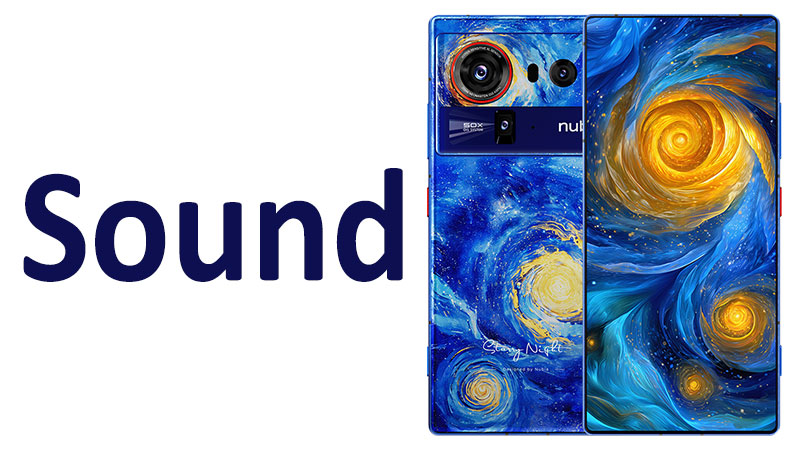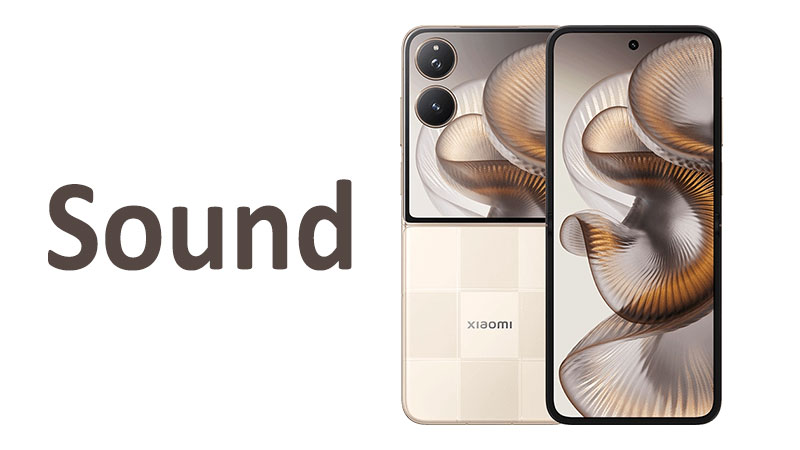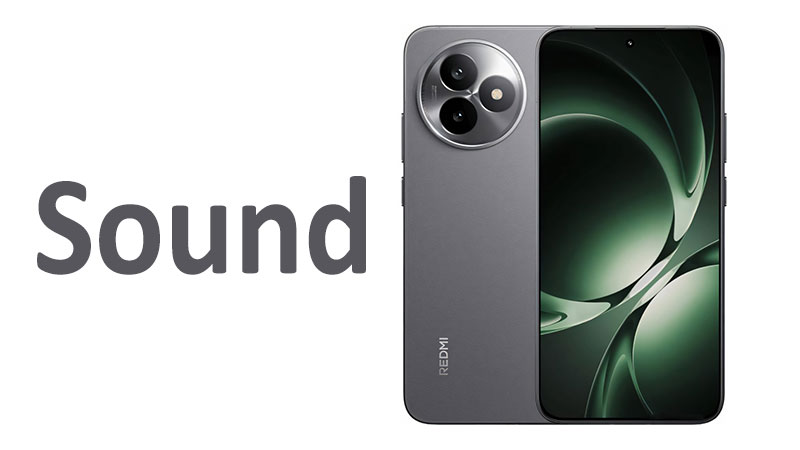The ZTE nubia Z80 Ultra sound features are a major selling point for this flagship device. Modern smartphone users now prioritize superior audio quality. This is true for both speaker performance and headphone output fidelity. This comprehensive article delivers a detailed review of the phone’s entire acoustic package. We will explore the specialized hardware and the advanced processing features. Understanding these specifications is essential for any potential buyer. The Z80 Ultra aims to establish a new standard for mobile listening excellence.
The Core Speaker Hardware: Stereo Sound and Acoustic Design
The Z80 Ultra uses a powerful, reliable stereo speaker configuration. This is standard for all premium modern smartphones today. Stereo sound provides a much wider, more engaging soundstage for the listener. This setup is crucial for enjoying both movies and games fully. It significantly enhances the overall immersion factor. The speakers are placed strategically on the top and bottom of the phone frame.
Speaker Placement and Loudness Dynamics
The stereo drivers are positioned to fire both upwards and downwards simultaneously. This specific acoustic placement helps create a more balanced sonic field. The upward-firing speaker is often positioned near the earpiece grille. The main downward-firing speaker sits next to the USB-C port. This ensures sound remains clear even when you hold the phone horizontally.
The nubia Z80 Ultra achieves very competitive peak loudness levels. It can successfully fill a small room with clear audio output. Achieving high volume without distortion is a hallmark of premium audio engineering. ZTE engineers focused on maximizing the size of the internal speaker chambers. Larger chambers inherently allow for better bass resonance. This careful design decision prevents the audio from sounding thin or weak.
Acoustic Engineering and Distortion Control
Controlling speaker distortion at high volumes is a major technical challenge. ZTE utilizes specialized digital signal processing, or DSP. This software processing manages the speaker performance in real-time. It actively limits driver excursion, or movement, when the volume reaches its maximum setting. This action successfully prevents any harsh, clipping sounds from occurring.
The acoustic tuning favors clarity across the mid-range and high frequencies. This particular tuning choice makes dialogue in videos very crisp and intelligible. The audio profile is slightly brighter than some competitors. However, this brightness ensures that voices always cut through the mix clearly. The resulting sound is clean, precise, and highly dynamic.
Specialized Comparison: Z80 Ultra vs. Previous Models
The Z80 Ultra speakers offer a noticeable improvement over the previous Z-series models. Earlier nubia phones often featured competent but standard stereo setups. The key improvement here lies in the refined acoustic chamber size. This allows the Z80 Ultra to deliver a fuller, more substantial bass response.
Furthermore, the new DSP algorithms are more effective at managing peak volume levels. Older models sometimes showed slight distortion when volume was maxed out. The Z80 Ultra maintains its pristine audio quality even at its loudest settings. The enhanced performance results from better hardware combined with superior software tuning. It represents a clear generational leap in internal speaker fidelity.
Wireless Revolution: The Snapdragon Sound Ecosystem
The most advanced feature of the Z80 Ultra is its full integration with Snapdragon Sound. This is a comprehensive platform developed by Qualcomm. Snapdragon Sound aims to drastically improve every aspect of wireless audio performance. It addresses common issues like high latency and low fidelity over Bluetooth connections. This feature makes the Z80 Ultra a fantastic choice for wireless headphone users.
What is Snapdragon Sound?
Snapdragon Sound is not a single feature; it is an integrated ecosystem. It works seamlessly across the phone, the audio processor, and compatible headphones. This end-to-end optimization focuses on three essential pillars. These pillars are superior audio quality, rock-solid connection stability, and incredibly low latency.
The platform ensures that data flows efficiently from the audio source to the headphones. It specifically minimizes unnecessary data compression along the entire pathway. This sophisticated process preserves high-resolution audio detail perfectly. However, users must pair the Z80 Ultra with certified Snapdragon Sound headphones. This is necessary to unlock the platform’s full performance potential.
The Importance of Low Latency in Wireless Audio
High latency is the noticeable delay between the screen action and the corresponding sound. This delay is a severe problem for both competitive gamers and movie watchers. Traditional Bluetooth connections often have significant, frustrating latency issues. Snapdragon Sound dramatically reduces this delay to barely perceptible levels.
Low latency ensures the game audio is always perfectly synchronized with the visuals. It gives competitive gamers a necessary tactical advantage during fast-paced play. Furthermore, it completely eliminates the annoying lip-sync issue in streaming movies. This technological achievement is a massive win for all wireless media consumption. It brings the user experience closer to a zero-delay wired connection.
High-Definition Wireless Codecs and Quality
The Snapdragon Sound platform utilizes advanced wireless audio codecs. These codecs are crucial for transmitting high-fidelity audio over the airwaves. They efficiently transmit much larger data packets compared to basic Bluetooth codecs. The system fully supports 24-bit/96kHz quality wirelessly.
This capability successfully bridges the traditional gap between wired and wireless audio fidelity. It ensures you experience the full detail of high-resolution tracks without any cables. This makes the Z80 Ultra an ideal device for music lovers who prefer the convenience of wireless earbuds. The high-definition streaming capability is a significant and measurable upgrade.
Specialized Comparison: Snapdragon Sound vs. Generic Bluetooth
The difference between Snapdragon Sound and generic Bluetooth is immediately apparent. Standard Bluetooth connections rely on older, less efficient codecs. These connections often result in noticeable compression artifacts in the sound. This leads to a flatter, less dynamic listening experience for the user.
Snapdragon Sound offers a comprehensive, highly optimized signal chain. It provides superior connection stability, especially in crowded radio frequency environments. Generic Bluetooth links often drop or suffer from brief stuttering issues. The Z80 Ultra, however, maintains a consistently robust and high-quality wireless link. It offers a clear, superior performance advantage for all wireless listening.
Wired and Digital Fidelity: 24-bit/192kHz Hi-Res Audio
The Z80 Ultra ensures maximum quality for wired connections, too. The phone holds the important certification for 24-bit/192kHz Hi-Res audio playback. This certification confirms the device’s internal digital audio capabilities. It signifies a significant commitment to delivering studio-grade sound fidelity. This is crucial for audiophiles who still prefer a wired setup.
Understanding the Hi-Res Standard
The 24-bit/192kHz specification represents the industry’s gold standard for digital audio quality. “24-bit” describes the superior dynamic range and high audio resolution. It allows the system to clearly distinguish between the quietest and loudest sounds effectively. “192kHz” is the sampling rate of the audio data. This rate is much higher than the standard CD quality of 44.1kHz.
The higher sampling rate allows for much more accurate, detailed audio processing. It ensures that the phone captures every sonic nuance in the original recording. This results in a cleaner, richer, and far more natural sound experience. The Z80 Ultra can play back specialized high-resolution audio formats perfectly.
The Digital-to-Analog Conversion Process
Since the Z80 Ultra lacks a traditional 3.5mm jack, digital-to-analog conversion is external. Users must rely on the internal DAC and amplifier of a dedicated USB-C adapter. Alternatively, they must use a high-quality set of USB-C headphones with a built-in DAC. The phone’s internal audio chip handles the initial 24-bit/192kHz processing beautifully.
The signal then transfers digitally through the USB-C port for final conversion. The Z80 Ultra ensures the initial digital signal is pristine and high-resolution. This allows the connected external hardware to handle the final conversion optimally. This process guarantees maximum fidelity for any wired listening through the port.
The Hi-Res Experience in Practice
Listening to true high-resolution files on the Z80 Ultra is a revelation. You immediately notice a massive improvement in sound separation and subtle detail. Instruments occupy distinct, clear positions within the wide soundstage. Voices sound natural and maintain a stunning, realistic texture.
However, the size of high-resolution files is much larger. These files often take up considerable storage space on the device. Users must download or stream from specialized high-quality audio services. The payoff is a truly immersive and highly detailed personal listening session. The Z80 Ultra successfully transforms music listening into a deeply critical activity.
Connectivity Compromise: The Missing 3.5mm Jack
The ZTE nubia Z80 Ultra follows the current industry trend of omitting the 3.5mm audio jack. This decision affects many users who rely on older, wired headphones daily. While common in flagships, this omission is still a significant practical trade-off. It forces users to fully embrace either wireless technology or the USB-C audio standard.
The Trade-Off: Slimness versus Legacy
The primary reason for removing the jack is simple physics and internal space. The 3.5mm port requires a surprising amount of valuable internal component space. Removing it allows engineers to install larger battery cells instead. It also contributes significantly to a slimmer, more modern device design profile.
ZTE prioritized the large battery and the complex internal speaker system greatly. The 3.5mm jack became the necessary sacrifice to achieve this specific design goal. This is a common practice across the entire premium smartphone sector. Therefore, users must be prepared to manage without the traditional physical audio connection.
Wired Alternatives: USB-C Audio
Users who still prefer wired listening have two good options available. They can acquire a standard, reliable USB-C to 3.5mm dongle adapter accessory. This adapter provides the necessary digital-to-analog conversion externally. Alternatively, they can purchase specialized USB-C headphones that connect directly.
The quality of the USB-C audio output is directly dependent on the adapter or headphone quality. A high-end adapter containing a superior DAC can offer excellent sound fidelity. The Z80 Ultra’s inherent Hi-Res capability ensures a clean digital signal for the external hardware. This means wired fidelity remains extremely high, despite the missing port.
Buyer Consideration: Adapter Dependency
Buyers should factor in the cost and convenience of relying on an adapter. Carrying a small adapter everywhere can sometimes feel inconvenient. Losing the adapter means temporarily losing the wired listening capability. This dependence can be a significant drawback for users with multiple wired headphones.
However, the high-quality Snapdragon Sound platform strongly encourages a move to wireless. The Z80 Ultra minimizes the need for a wired connection in the first place. This is achieved through its superior low-latency and high-resolution wireless performance. Buyers must decide if the wireless benefits outweigh the wired connection inconvenience.
Audio Quality Analysis: Use Cases and Performance
Evaluating the Z80 Ultra requires examining its performance across several key usage scenarios. The phone excels in various areas due to its advanced internal technologies. This analysis covers music playback, mobile gaming, and general multimedia consumption.
Gaming Performance and Positional Audio
Mobile gaming performance is a major strength of the Z80 Ultra. The low latency provided by Snapdragon Sound is absolutely crucial here. It ensures all sounds, like footsteps or gunfire, register instantly and accurately. This immediate feedback significantly improves the player’s overall reaction time.
The stereo speakers also provide excellent positional audio cues. This means you can accurately identify the direction of an enemy in a competitive game. The phone’s ability to create a wide soundstage is essential for this experience. Snapdragon Sound also offers improved voice chat quality for team communication during gameplay.
Music Playback and Dynamic Range
Music playback is outstanding, particularly when using compatible accessories. The combination of 24-bit/192kHz processing and Snapdragon Sound is a massive benefit. The phone delivers a dynamic range that is much wider than standard smartphones. This gives the music a significant sense of depth and life.
A wide dynamic range allows listeners to hear both the powerful crescendos and the quietest whispers. The Z80 Ultra reveals subtle details often completely lost on lower-quality devices. The internal speakers offer a very accurate and clean representation of the recorded music. This makes the phone suitable for casual music lovers and critical listeners alike.
Voice and Communication Clarity
The Z80 Ultra also ensures superior voice clarity for all calls and video conferencing. The stereo speakers handle human speech frequencies with superb precision. Dialogue remains clear and never sounds muffled or distorted, even in noisy environments. The phone likely utilizes advanced noise cancellation features for microphone input.
This ensures your voice is transmitted clearly and without intrusive background noise. Snapdragon Sound technology also enhances voice quality over wireless calls. It helps maintain HD voice clarity for the user and the person they call. Communication is consistently clear, reliable, and entirely professional.
The Decision Factors: Pros, Cons, and Key Takeaways
The ZTE nubia Z80 Ultra audio capabilities are comprehensive and feature-rich. It targets a specific audience that values high-resolution audio and superior wireless technology. However, it also presents a familiar compromise common to all modern flagship phones.
Pros of the Audio System
The Z80 Ultra offers numerous high-end advantages for every audio user.
- Superior Wireless Fidelity: Snapdragon Sound enables highly efficient, high-resolution wireless streaming.
- Ultra-Low Latency: This feature is essential for serious mobile gaming and synchronized video watching.
- Exceptional Digital Quality: 24-bit/192kHz Hi-Res support guarantees top-tier digital audio processing.
- Loud and Clear Speakers: The powerful stereo setup delivers a wide soundstage with minimal distortion.
- High Compatibility: It works seamlessly with a large and growing ecosystem of certified audio products.
Cons and Limitations
Prospective buyers must acknowledge and accept these specific design limitations.
- No Headphone Jack: The lack of the 3.5mm port forces dependence on adapters or wireless accessories.
- External Hardware Needed: Achieving maximum wired fidelity requires an investment in quality USB-C audio gear.
- Ecosystem Dependency: The full benefits of Snapdragon Sound require pairing with certified headphones.
- Speaker Bass is Adequate: The bass response is good, but it does not match the deep physicality of a dedicated woofer system.
Key Takeaways for Buyers
The Z80 Ultra is an excellent choice for modern, forward-thinking wireless users. This phone is ideal for mobile gamers who demand instant, zero-delay audio synchronization. It also greatly appeals to music fans who use high-quality Bluetooth earbuds daily. The Snapdragon Sound integration is the phone’s greatest selling point.
Conversely, traditional audiophiles who insist on a dedicated 3.5mm jack should look elsewhere. Users who own a vast collection of legacy wired headphones will face some inconvenience. However, the phone offers a clear pathway to future-proof, high-definition wireless listening. Buyers prioritize wireless convenience and low latency over the traditional wired connection.
Conclusion
The ZTE nubia Z80 Ultra sound system successfully focuses on advanced digital and wireless technology. The standard stereo loudspeakers deliver clear, loud, and reliably detailed audio output. The phone’s true strength lies in its high-resolution digital architecture. This includes the crucial 24-bit/192kHz Hi-Res audio certification.
The seamless, full integration of the Snapdragon Sound platform is a significant achievement. It provides industry-leading low latency and high-fidelity wireless performance. This makes the Z80 Ultra a superior device for all high-speed media consumption. The deliberate omission of the 3.5mm headphone jack is the main design compromise. This decision helps enable the phone’s sleek profile and internal space efficiency.
Overall, the Z80 Ultra is positioned as a powerful audio device for the modern user. It strongly encourages a shift towards a high-quality wireless future. The phone delivers exceptional performance across music, gaming, and communication. It stands as a top-tier choice for consumers prioritizing advanced digital audio fidelity and wireless freedom.
Frequently Asked Questions (FAQ)
Does the ZTE nubia Z80 Ultra feature a 3.5mm headphone jack?
No, the Z80 Ultra does not include the traditional 3.5mm headphone jack. You must use USB-C audio or Bluetooth accessories.
What is the major benefit of Snapdragon Sound technology?
Snapdragon Sound primarily provides ultra-low latency for wireless audio. It also ensures high-resolution audio streaming over compatible Bluetooth connections.
Is the speaker output on the Z80 Ultra loud and clear?
Yes, the phone features dedicated stereo speakers. They deliver a wide soundstage and achieve a high volume with minimal distortion.
Can the phone play high-resolution audio files?
Yes. The Z80 Ultra is certified to process and play 24-bit/192kHz Hi-Res audio files with exceptional detail.
Do I need special accessories to get the best audio quality?
Yes, you need high-quality headphones. You must use accessories certified for Snapdragon Sound to fully unlock its wireless performance benefits.



